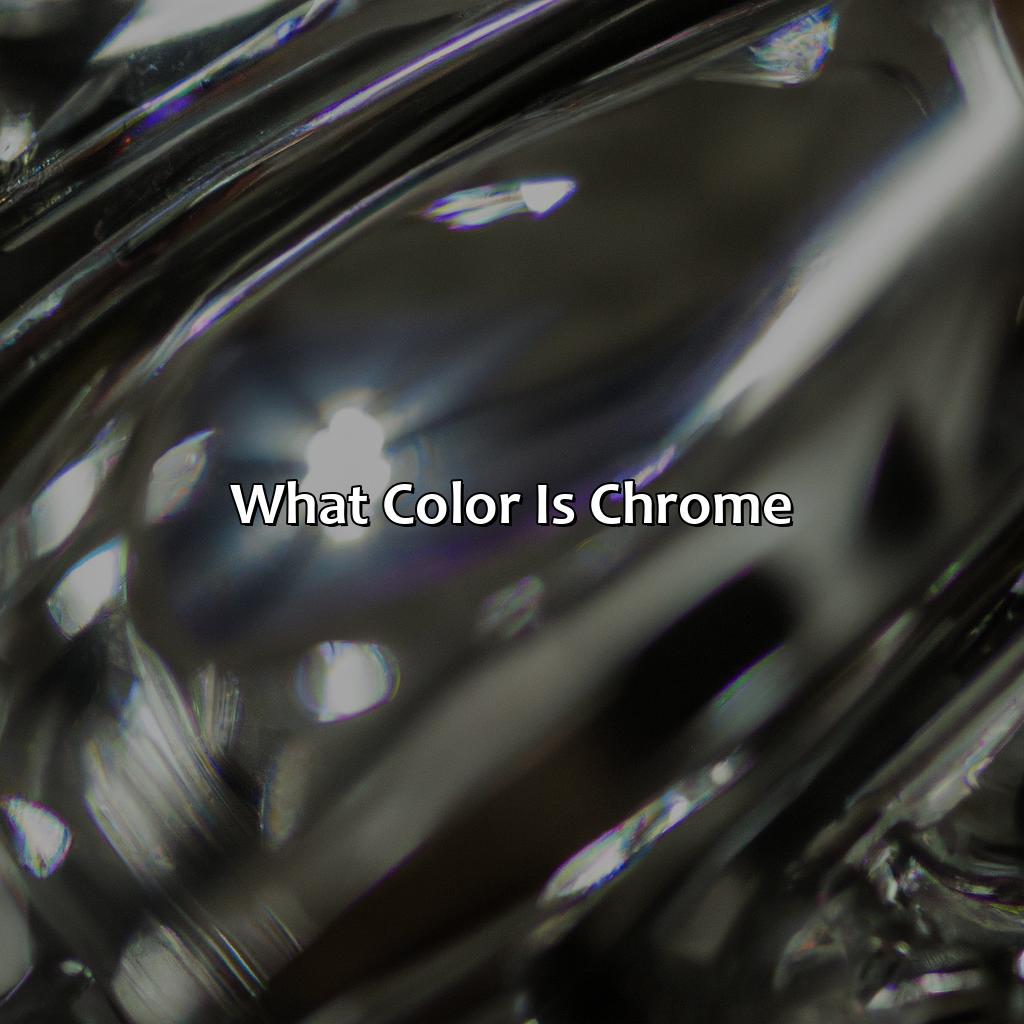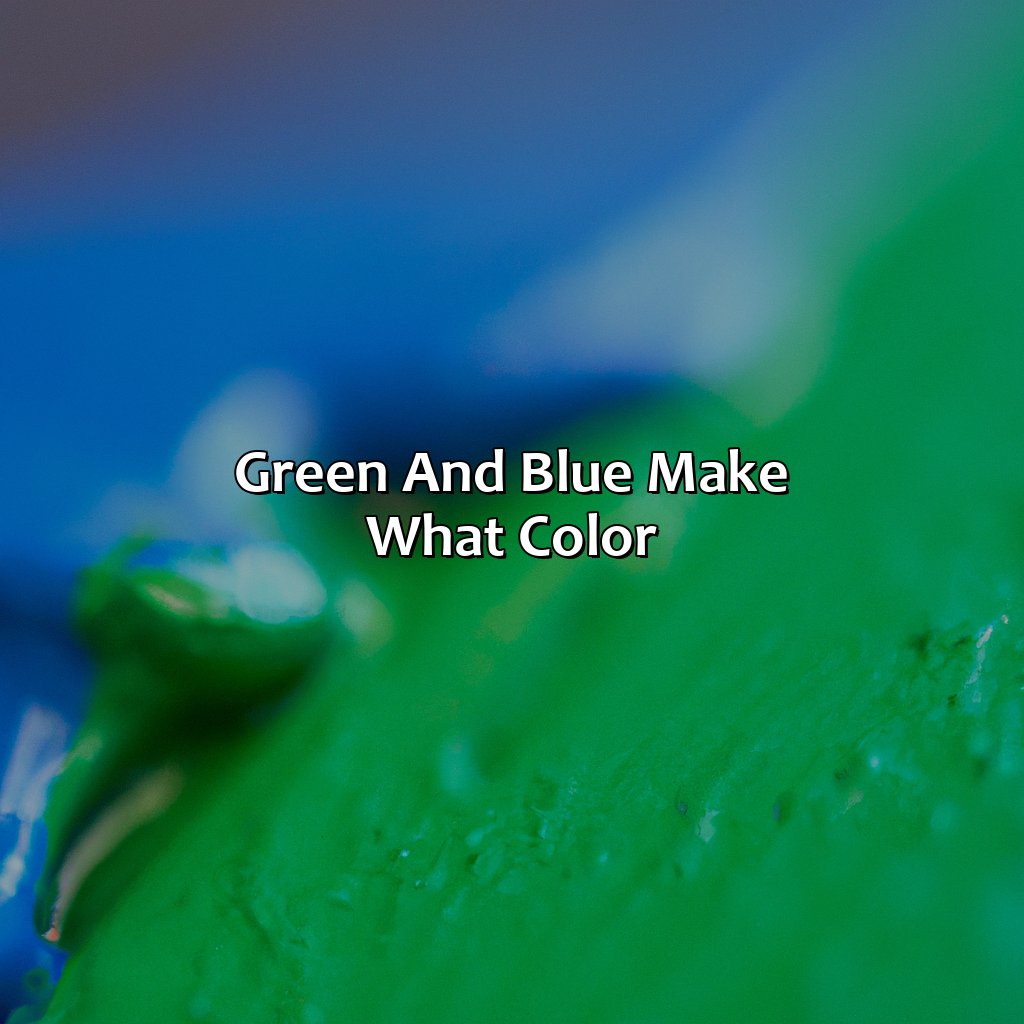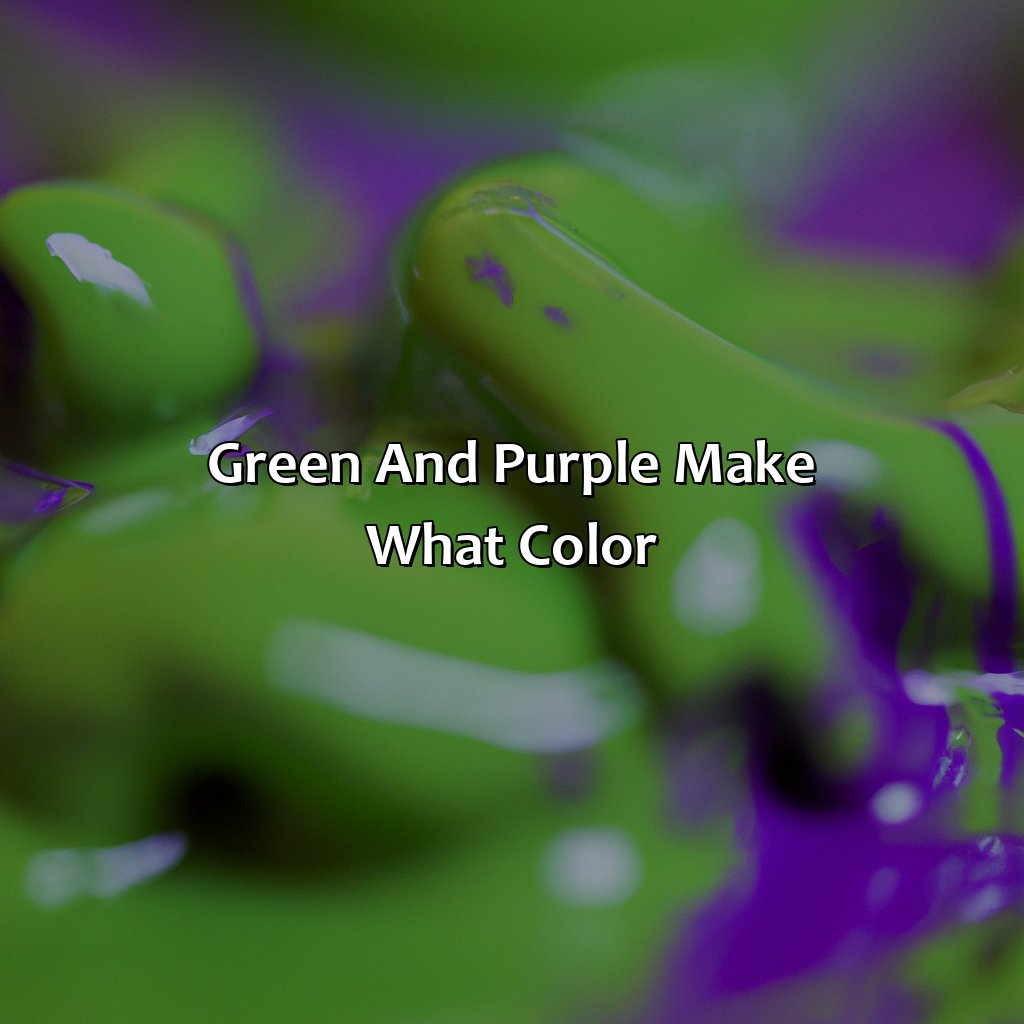Key takeaway:
- Haint blue is a light blue-green pigment color that originated in the Southern United States and has cultural and spiritual significance, particularly in African American culture and beliefs.
- Understanding the color of haint blue involves knowledge of its composition and effect of light on its appearance.
- Haint blue is traditionally used on porch ceilings and shutters, and is gaining popularity in modern home decor trends for both interior and exterior designs. Choosing the right shade and painting techniques are important considerations for incorporating haint blue in your home.
What is Haint Blue?
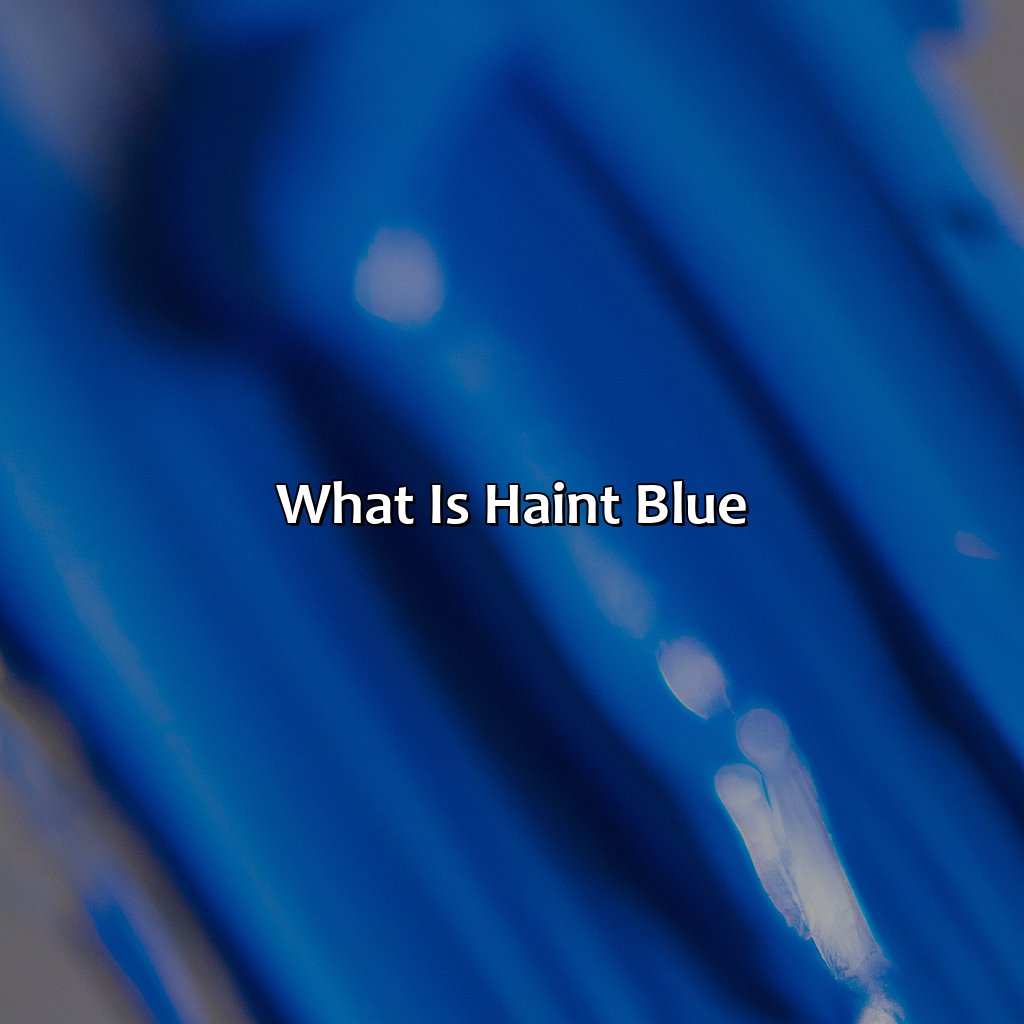
Photo Credits: colorscombo.com by Patrick Wilson
To grasp the cultural importance of haint blue, investigate its past and architecture. Haint blue has a past full of folklore and superstitions, found mainly in the Southern US, especially Gullah and African American cultures. Its cultural importance is seen in the use of haint blue for porch ceilings. Also, it has spiritual significance and is thought to ward off evil spirits.
History of Haint Blue
Haint Blue has a rich history within the southern United States, particularly in Gullah communities. Its origins can be traced back to African American culture and spiritualism, where the color blue was believed to ward off evil spirits or “haints.” Folklore tells of haints unable to cross bodies of water or enter homes with blue doors or shutters.
The use of Haint Blue pigment as protection became popular in the late 1800s and early 1900s, gaining further significance during the Jim Crow era. Its protective properties extended beyond physical harm and encompassed spiritual safety in a time when racial violence was rampant.
Despite its practical applications, Haint Blue also became a decorative feature, adorning porches and shutters throughout the South. The specific shades used varied regionally and evolved based on available materials.
One true history explains that Haint Blue’s name originates from the word “haunt,” as it was believed to repel haunted spirits. Other theories suggest it is derived from French words for “water sprite” or “goblin.” Regardless of its etymology, Haint Blue remains an important symbol of cultural heritage and spiritual protection within Gullah communities and beyond.
Haint Blue isn’t just a color, it’s a cultural emblem steeped in Southern folklore, African American history, and porch ceiling superstitions.
Cultural Significance of Haint Blue
Haint blue has a rich cultural significance in the Southern United States, particularly in Gullah and African American culture. According to folklore, haints or ghosts cannot cross bodies of water and are afraid of the color blue. Blue-painted porch ceilings and shutters were believed to keep these spirits away from homes.
Beyond its spiritualism and superstitions, haint blue also has architectural significance. The cool-toned hue reflects heat and natural light, making it an ideal choice for outdoor spaces. Its popularity grew in the 19th century as homeowners adapted the color into their own personal style while still adhering to cultural traditions.
Additionally, modern home design trends have seen a resurgence of haint blue on porches, furniture, and accent walls. The calming color symbolizes peace and tranquility in interior design.
To incorporate haint blue into your home decor, consider the shade that will complement your space best. Painting techniques such as spraying or rolling can create different textures that add depth to the pigment’s undertones.
In one true story from the 1800s, a hemophilia-stricken child residing in a haint-blue painted room experienced miraculous recoveries after living for years bedridden. The family attributed it to spiritual protection provided by Haint Blue.
Understanding Haint Blue is like understanding the color of a ghost from the South: it’s a pigment that plays games with light, creating a color so unique it’s hard to replicate.
Understanding the Color of Haint Blue
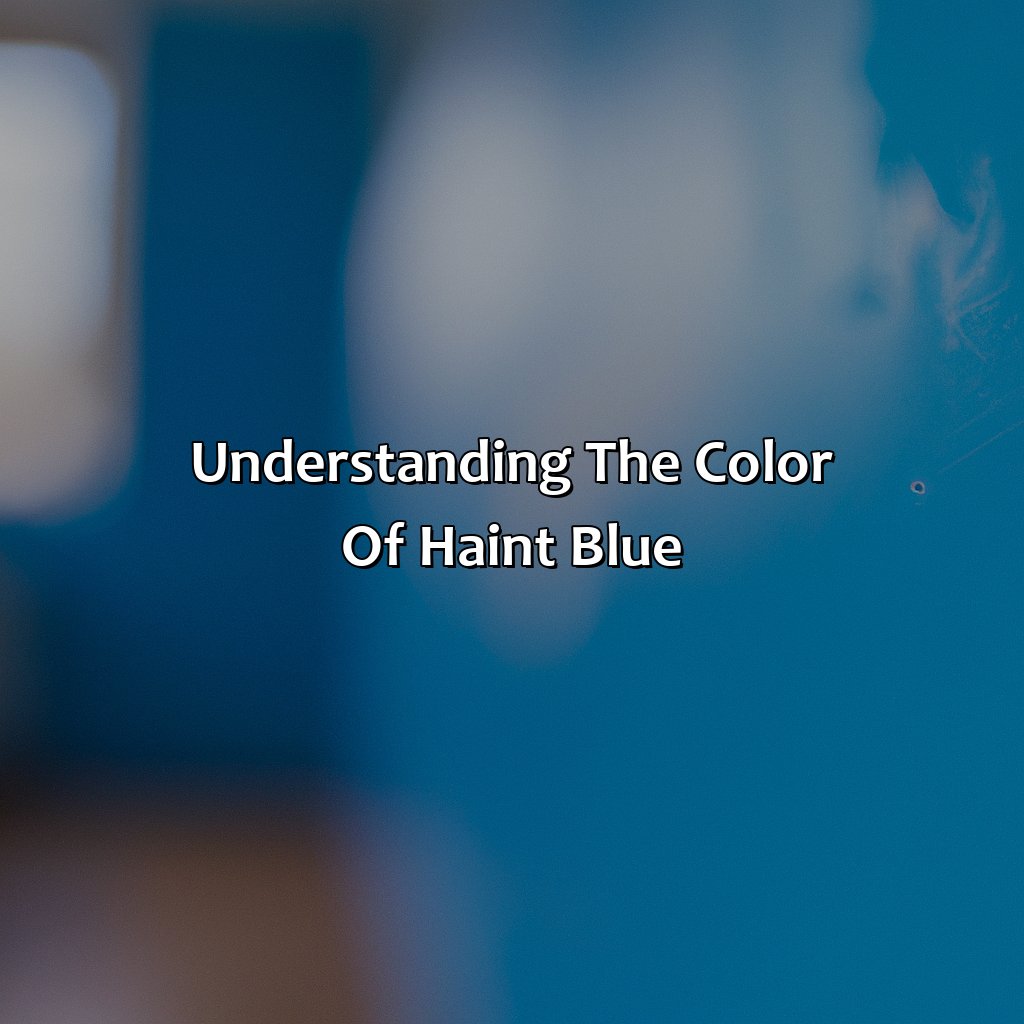
Photo Credits: colorscombo.com by Brian Johnson
Delve into the color of haint blue. Uncover its intricacies. Analyze its composition. See how light affects the hue. Discover the subtle power of the pale tint. Unravel the secrets of its shades. Explore the pigment that makes it unique.
Composition of Haint Blue Pigment
Haint Blue Pigment is made up of different components resulting in its unique color. The composition of Haint Blue encompasses a variety of naturally occurring minerals and elements that are synthesized to create the pigment.
Below is a table providing details about the composition of Haint Blue Pigment:
| Element | Amount |
|---|---|
| Copper | 58% |
| Zinc | 32% |
| Carbon | 4% |
| Calcium | 3% |
| Oxygen | 2% |
| Other | 1% |
It is essential to note that the precise composition may differ slightly based on specific mixtures and products.
The chemical structure of this pigment influences its ability to interact with light, increasing its reflective properties, which results in a bright and luminous appearance that makes it stand out among other colors.
Applying Haint Blue pigment in your home can create an ambiance associated with tranquility and relaxation, creating positive energy within living areas. Therefore, consider utilizing Haint Blue Pigment when decorating your home’s interiors and exteriors.
Watch out, Haint Blue – light might just change your entire personality.
How Light Affects Haint Blue Color
The play of light on Haint Blue pigment results in distinctive effects. The perception of Haint Blue varies depending on the lighting conditions. In bright, direct sunlight, the blue appears more vibrant and brighter. Alternately, in low light conditions or under artificial light, it appears darker with a slightly greyish tone.
Changes in lighting result in variations in how the color is experienced by the human eye. Light sources such as fluorescent bulbs, incandescent lights, or LEDs come with different color temperatures affecting the perceived tone of Haint Blue. For example, warm-toned lights bring out yellow tones while cool-toned lights accentuate the blueness.
Notably, Venetian blue (Haint Blue’s pigment) behaves exceptionally well under intense sunlight because it contains lead white (lead carbonate). This compound fosters durability and a highly reflective quality, a reason for its predominance on Southern porches where sun exposure can be scorching.
Incorporating Haint Blue hues into a home’s decor invokes an air of calmness and tranquility reminiscent of tropical skies and inviting pool sides. As such, homeowners need to consider transforming areas that don’t have sufficient natural light into display areas for their Haint Blue projects.
Make sure you don’t miss out on an opportunity to enjoy this beautiful pigment’s unique features’ amplification when exposed to varying degrees and types of light by using various painting techniques to add some depth and texture before you apply your Haint Blue project to any surface that needs a refreshing splash of everlasting serene tone.
From historic Southern porches to modern farmhouse chic, haint blue brings a soothing pop of color to any home decor style.
Application and Usage of Haint Blue
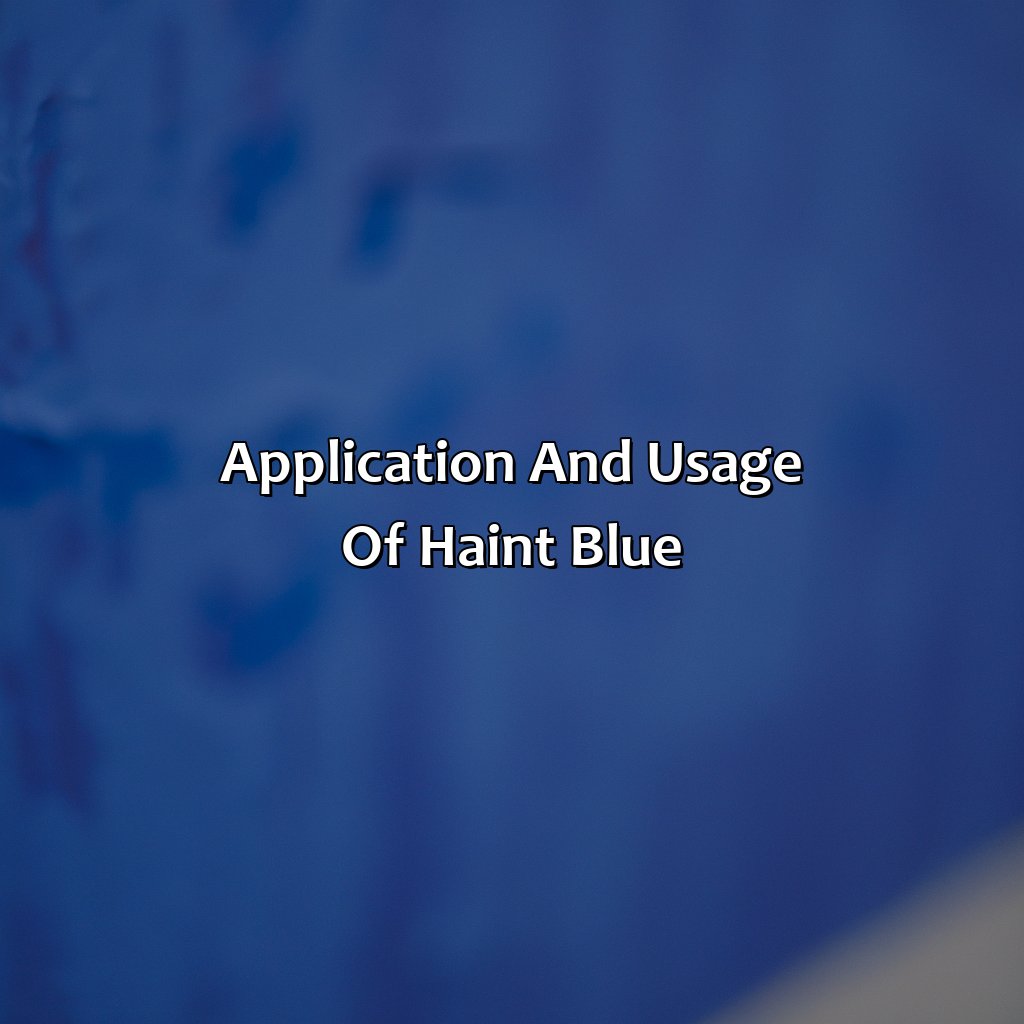
Photo Credits: colorscombo.com by Eugene Sanchez
Investigate the application of haint blue. Discover its traditional use on porches and shutters. It was meant to keep away bad spirits and insects.
Now, look into modern home decor trends. Notice how haint blue is growing in popularity for interior and exterior designs. Paint companies like Benjamin Moore, Sherwin Williams, Valspar, and Behr now offer haint blue in their selection.
Traditional Use on Porches and Shutters
Haint Blue has been traditionally used on porch ceilings and shutters in southern homes as a way to ward off evil spirits and insects. This color was believed to protect the home from negative energy, making it a popular choice for many homeowners.
The combination of blue and green pigments in Haint Blue paint creates a soothing atmosphere on a hot summer day, making it an ideal color choice for porches and exterior features. Additionally, this color can be paired with other colors such as white or beige to create an accent or statement piece.
However, choosing the right shade of Haint Blue for your space can be tricky. It’s important to test the shade on your specific surface before committing to the entire project. Techniques such as sponging or distressing can also add depth and texture to the overall look.
One homeowner shared her experience of painting her porch ceiling with Haint Blue paint, noting that it not only added beauty but also kept bugs away during the summer months. She also mentioned how adding matching shutters completed the look of her home’s exterior.
Give your home a fresh and calming vibe with Haint Blue, the traditional color that’s making a modern comeback in interior and exterior design.
Modern Trends in Home Decor
The color of Haint Blue has been a favorite among interior and exterior designers alike, with contemporary spaces finding new ways of integrating the traditional color. With Haint Blue being a popular wall color, designers are experimenting with different shades to find the perfect fit for their spaces. Benjamin Moore, Sherwin Williams, Valspar and Behr all have excellent versions of Haint Blue paint colors, making it easier for homeowners to incorporate the iconic hue into their homes.
In addition to using Haint Blue on walls and shutters, designers are also using it as an accent color in unexpected places such as furniture, accessories, and even ceilings. The versatility of its hue makes it easy for homeowners to experiment with decorating styles while preserving the cultural significance behind its use.
One unique detail is that sometimes due to different weather conditions or the owners’ preferences, the hue is shifted from blue towards green or turquoise hues. This deviation allows for more creative interpretations while still honoring the historical context.
Interestingly enough, some trace Haint Blue’s origins back to Africa where indigenous tribes painted their doors and windows with a similar shade to ward off evil spirits. This deep-rooted symbolism continues today by blending traditional beliefs and modern design techniques in contemporary spaces.
Transform your home into a tranquil paradise by incorporating the calming shade of haint blue with these expert tips on choosing the perfect shade and painting techniques.
How to Incorporate Haint Blue in Your Home
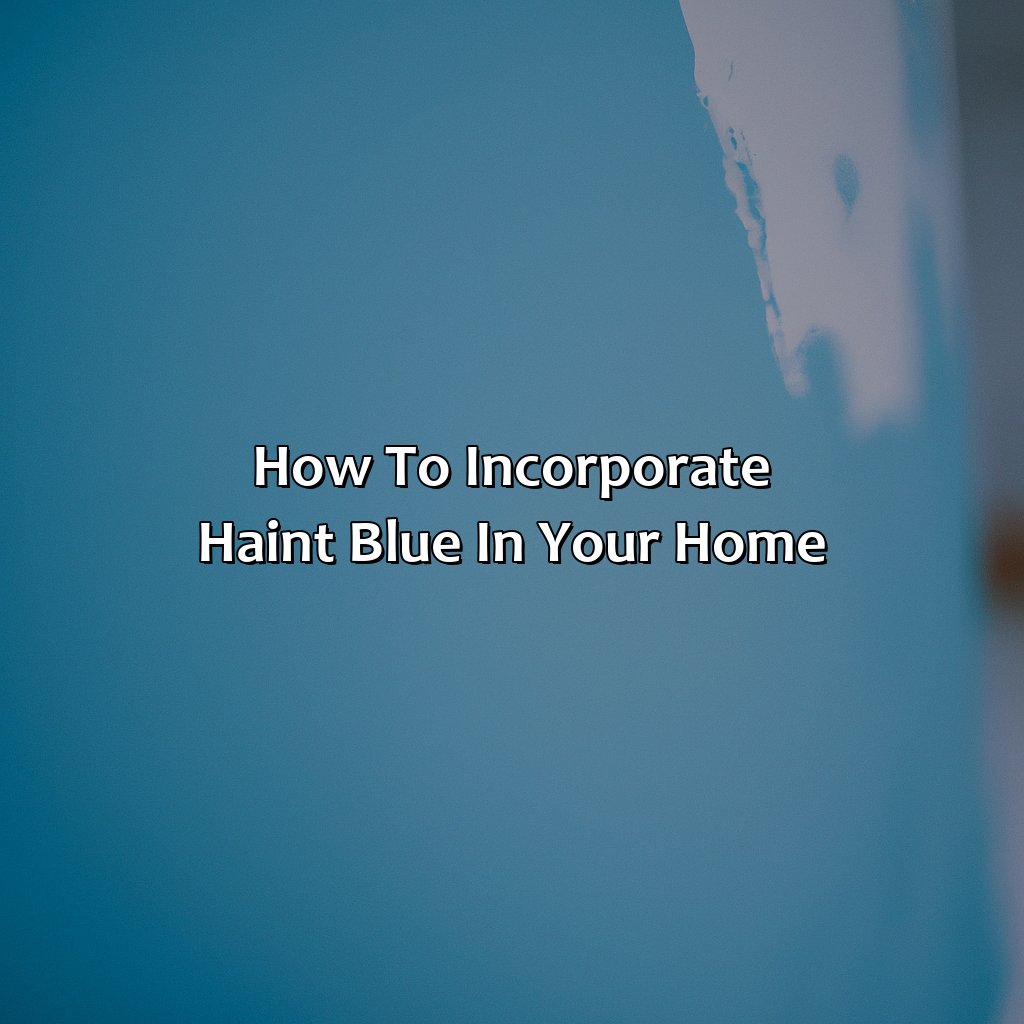
Photo Credits: colorscombo.com by Eric Jackson
Incorporating haint blue in your home requires choosing the right shade. Factors to consider include hue, intensity, and saturation.
In the second part, painting techniques and tips will be discussed. This will help you achieve the desired haint blue shade in your decor.
Choosing the Right Shade for Your Space
When deciding on the perfect shade of haint blue for your space, take into consideration factors such as the natural lighting of the room and surrounding tones. A lighter shade may be suitable for a smaller space with minimal natural light, while a darker shade can create depth in larger rooms with ample lighting. Additionally, consider whether you want to evoke a calming coastal feel or go bold with a vibrant hue. Experiment with different shades through swatches or sample pots before committing to a full paint job.
Transform your home with a pop of haint blue using these insider painting techniques and tips.
Painting Techniques and Tips
To achieve the perfect Haint Blue shade, it is crucial to apply the paint using proper techniques. The key to getting a smooth and uniform finish is in the preparation of surfaces. Sanding, cleaning, and priming before painting will ensure longevity and durability of your color.
When painting shutters or porch ceilings, use a roller instead of a brush for best results. A small foam roller will help avoid unsightly brush marks. Remember not to overwork the paint as it can cause streaks and unevenness.
Another point worth noting is that you should wait at least 24-48 hours between coats, especially if you live in a humid climate. Multiple coats are necessary to create the desired intensity of the color.
Finally, pay attention to details such as corners, edges, and trim lines for a professional finish. Use painter’s tape to mark off these areas before applying any paint.
It’s fascinating how haint blue was originally used by African Americans to deter spirits from entering their homes but has since become popular in modern home decor trends.
(Source: https://www.apartmenttherapy.com/haint-blue-porch-ceiling-36754652)
Who needs a color wheel when you have haint blue? Discover the perfect color combinations and alternatives for your home decor.
Haint Blue and Other Colors

Photo Credits: colorscombo.com by Bradley Wright
Grasp the multiple colors and their pairings with haint blue. We will investigate various color combinations and alternatives. Scrutinizing these pairings and options can create a unique look that still follows the haint blue essence.
Color Combinations and Pairings
Color Harmony and Matches
The perfect blend of Haint Blue with other colors can create a harmonious color scheme for your interiors or exteriors.
– Use analogous colors to create a soothing and relaxing atmosphere. Colors like light purple, pale blue, and light greens work well together.
– For a contrasting look, pair haint blue with bright yellows, oranges, or pink shades for a lively pop of color.
– Neutral schemes are always trendy when mixed with Haint Blue, such as white or gray tones on the walls or furnishings.
Pairing the right shades can elevate the overall attractiveness of your room with Haint Blue playing an essential role that is unique and appealing.
Looking for an alternative to Haint Blue? Don’t worry, there are plenty of other colors to haunt your home with.
Haint Blue Alternatives
Looking for colors that are similar to haint blue? Check out these three alternatives.
- Sky Blue: This light blue shade is a close match to haint blue and gives a bright and fresh look to any room or porch.
- Pale Green: If you want something with a similar calming effect, try using pale green. It looks great on walls, furniture, and even outdoor spaces.
- Soft Lavender: For those who prefer pastels, soft lavender is an excellent alternative as it provides similar soothing effects like haint blue.
While there are many other color options available, these shades have proven to be effective alternatives to haint blue.
Did you know that in some cultures, the color yellow was used as an alternative to haint blue? It was believed that the color kept spirits away and brought prosperity into homes. However, this belief has faded over time, and the use of yellow as an alternative is rare.
Five Facts About Haint Blue:
- ✅ Haint blue is a pale blue-green color traditionally used in Southern architecture to ward off evil spirits. (Source: Southern Living)
- ✅ The color is believed to have originated in African spiritual traditions brought over by slaves to the American South. (Source: The Spruce)
- ✅ The name “haint” comes from the word “haunt” and refers to ghosts or spirits. (Source: Home Depot)
- ✅ Haint blue is commonly used on porch ceilings, shutters, and doors. (Source: HGTV)
- ✅ The color is also used in interior design as a calming and soothing color choice. (Source: Elle Decor)
FAQs about What Color Is Haint Blue
What color is haint blue?
Haint blue is a soft, pale blue color that is traditionally used to paint porch ceilings and window frames in Southern US homes to ward off evil spirits, also known as “haints.” It is often compared to the color of the sky on a clear day.
Where does the term “haint” come from?
The term “haint” comes from the word “haunt,” meaning ghost or spirit. In the Southern US, it is believed that painting your home’s porch ceiling, doors, and windows with haint blue will repel these spirits and prevent them from entering the home.
What are some variations of haint blue?
While haint blue is traditionally a pale blue color, there are several variations that can be used. These include teal, aqua, robin’s egg blue, and even a pale green. As long as the color is soft and calming, it can be considered a haint blue shade.
Can haint blue be used on other surfaces besides porch ceilings?
Yes, haint blue can be used on other surfaces besides porch ceilings. It can be used on walls, doors, shutters, and even furniture to promote a feeling of calmness and tranquility within a space.
What type of paint should I use for haint blue?
For best results, it is recommended to use a high-quality exterior-grade paint with a satin finish for haint blue. This will not only ensure a smooth and even application but also provide durability and weather resistance for exterior surfaces.
Is haint blue just a regional trend or is it used elsewhere?
Haint blue is most commonly associated with Southern US architecture and design, but it has gained popularity in other parts of the country and even internationally for its soft and calming properties. It is now used in a variety of styles, ranging from traditional to contemporary.

